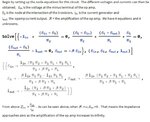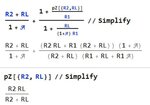sutapanaki
Advanced Member level 4

Pretty immediate in this case. The output resistance with feedback removed is R1, the loop gain with port (terminals of RL) shorted is A and the loop gain with port open is 0. The result is R1*(1+A).








